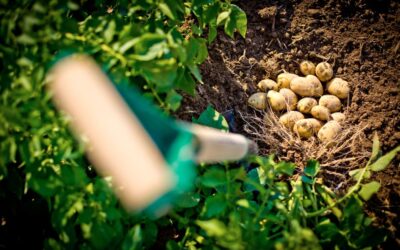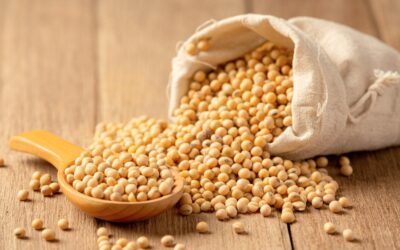Procedure for planting and caring for yellow camellia tea trees on the ground.
I. Introduction
Yellow camellia tea, also known as golden camellia or scientifically as Camellia chrysantha, is a type of plant found abundantly in the Guangxi region of China. This plant is also commonly found in the Tam Dao mountain range in Vinh Phuc province, as well as in Ba Che district of Quang Ninh province.
Yellow camellia tea has long been recognized as a precious plant species, containing many nutritional values inherent in nature. In addition to its role in improving the environment and serving as an ornamental plant, yellow camellia tea is also a valuable medicinal herb, containing numerous active compounds that support the prevention of diseases related to tumors, cancer, cardiovascular diseases, diabetes, and hypertension. In the future, the potential of yellow camellia tea for both domestic and international markets is expected to increase significantly. However, without proper care, the plant may not flower or grow well, resulting in low yields.
According to research by scientists, yellow camellia tea thrives best in natural environments with the following conditions: average annual temperature of 20.1°C – 23.4°C; average annual rainfall of 1560 mm – 2594 mm; suitable soil types including sandy loam, light to medium loam, slightly acidic to slightly alkaline soil, brown, gray, or black soil, friable surface soil, and soil with high moisture content along stream banks.
II. Planting and Care Techniques
a) Soil Preparation:
Soil preparation is crucial for yellow camellia tea plants. It facilitates their growth and development while preventing pests and diseases. Whether using field soil, peat soil, or hill soil for planting yellow camellia tea, it is essential to level the planting area. The soil should be friable, well-draining, and rich in nutrients necessary for plant growth. The ideal pH for soil is 4.4-5.5. Plow and harrow the soil finely, create beds about 1.2 meters wide, 40-60 cm high, and 50 cm apart to ensure adequate water supply for the plants. If the hill soil cannot be plowed by machine, plow it deeply to 40-45 cm without forming soil clods. Mix the top layer of sandy soil thoroughly with the deeper loamy soil using a hoe or shovel.
b) Fertilizing Newly Planted Tea Trees
- Microbial organic fertilizers play a crucial role in improving the chemical and physical properties of tea soil. They serve as a balanced source of nutrients, enhancing soil aeration and structure. For young tea plants, which demand rapid development of roots, stems, branches, and leaves, early root growth is essential for accessing deeper layers of soil for water absorption, thus resisting drought, while branch development is crucial for canopy formation.
- VN3 microbial organic fertilizer from Suoi Hai Production and Trading Company, besides containing a variety of nutrients, mid-range, and trace elements formed after the decomposition of pig and cattle manure, it also exists in the form of humus. Additionally, it contains beneficial microorganisms that promote the growth and development of crops while inhibiting the growth of pathogenic microorganisms in the root zone of plants.
- Amount of fertilizer: 0.3 – 0.5 kg of organic microbial fertilizer VN3 per pit.
- Fertilization time: 7-10 days before planting, then cover the fertilizer.
- Loosen the pit wall and bottom (make grooves), fill the soil about 20 cm deep, then carefully place the tea bag to avoid damaging the root system of the tea, remove the bag, place the bag in the pit, plant the seedlings in one direction following the prevailing wind direction, gently press the soil evenly, avoid leaving gaps around the bag.
- Fill the soil around the bag so that there is still a gap of 2.5 cm – 3.5 cm (for clustered tea) or 4-5 cm (for scattered tea).
- After planting, a layer of mulch about 8-10 cm thick can be applied to retain moisture.
c) Fertilizing for basic and commercial tea plants
*Principles of fertilization
- Fertilize according to the age and productivity of the tea plants, applying less fertilizer to young plants and more to mature plants with higher productivity.
- Fertilize to balance the NPK elements.
- Apply fertilizer correctly and at the right time, targeting the appropriate plants, including base and top dressing, in a timely manner.
- Adjust the dosage and ratio of fertilizer elements according to weather conditions and climate.
* Topdressing for basic tea planting (1-3 year-old tea plants)
- Apply 1.0 – 1.5 tons of organic microbial fertilizer VN3 per hectare.
- Apply 0.6 – 0.7 tons of mineral organic fertilizer SH01 per hectare (SH01 mineral organic fertilizer and VN3 microbial organic fertilizer from Suoi Hai Manufacturing and Trading Company).
- Fertilize twice a year: in March and July. Spread around the canopy, 20 cm away from the base along the trench, 6 – 8 cm deep, when the soil moisture is about 70-80%, apply the fertilizer, then cover with soil.
Note: Do not fertilize during prolonged hot weather. Fertilize when the soil is sufficiently moist, and avoid fertilizing during periods of heavy rain and concentrated rainfall.
* Topdressing for commercial tea (over 3 years old)
After about 3 years of cultivation, tea plants start to yield leaves, and after 4 – 5 years, they will yield flowers. The flowering period is concentrated from November to February of the lunar calendar. During the flower formation and bud nurturing period, it is necessary to fertilize the plants with sufficient nutrients, especially with SH01 mineral organic fertilizer containing phosphorus and potassium. Phosphorus helps root development while potassium helps promote abundant, vibrant, and long-lasting flowers.
- Apply 2.0 – 2.5 tons of VN3 microbial organic fertilizer per hectare.
- Apply 0.7 – 1.0 tons of SH01 mineral organic fertilizer per hectare. Apply fertilizer twice a year: in March and July. Spread around the canopy, 20 cm away from the trunk, and dig a trench 6 – 8 cm deep. Apply the fertilizer, then cover with soil.
III. Pest and Weed Control
Effective pest and weed control directly impacts tea yield. It is important to focus on integrated pest management (IPM) principles, based on regular field inspections and weed cleanliness. For highland tea, special attention must be paid to weeding around the roots and clearing weed strips to prevent damage from cattle. Yellow flower tea is less prone to diseases than other plants. However, some diseases such as stem borers, leaf-eating insects, and aphids can still be found on the plants. Therefore, it is important to pay attention when a few plants show signs of disease and to spray pesticides to avoid affecting the entire garden. Biological pesticides are preferred to reduce environmental pollution.
Therefore, it is necessary to clean up the remnants of diseased plants to reduce the source of disease for the following year. Fertilizing adequately, cleaning weeds, and good drought prevention help the plants grow healthy. Use microbial antagonistic products to prevent pests and diseases.
- Dosage: 50 liters/ha.
- Spray twice a year in April and August, one week before tea harvesting, or apply to affected areas with a dosage of 70 liters/ha, spraying every 7-10 days.
Note: Spray the microbial product as a mist, evenly in one go, do not spray multiple times. Do not spray in sunny weather. The appropriate time to spray is before 8 AM and after 4 PM. If it rains, additional spraying is required. For diseased plants, use specific medicines for treatment, and only after 3 – 5 days of recovery should the microbial products be used.



